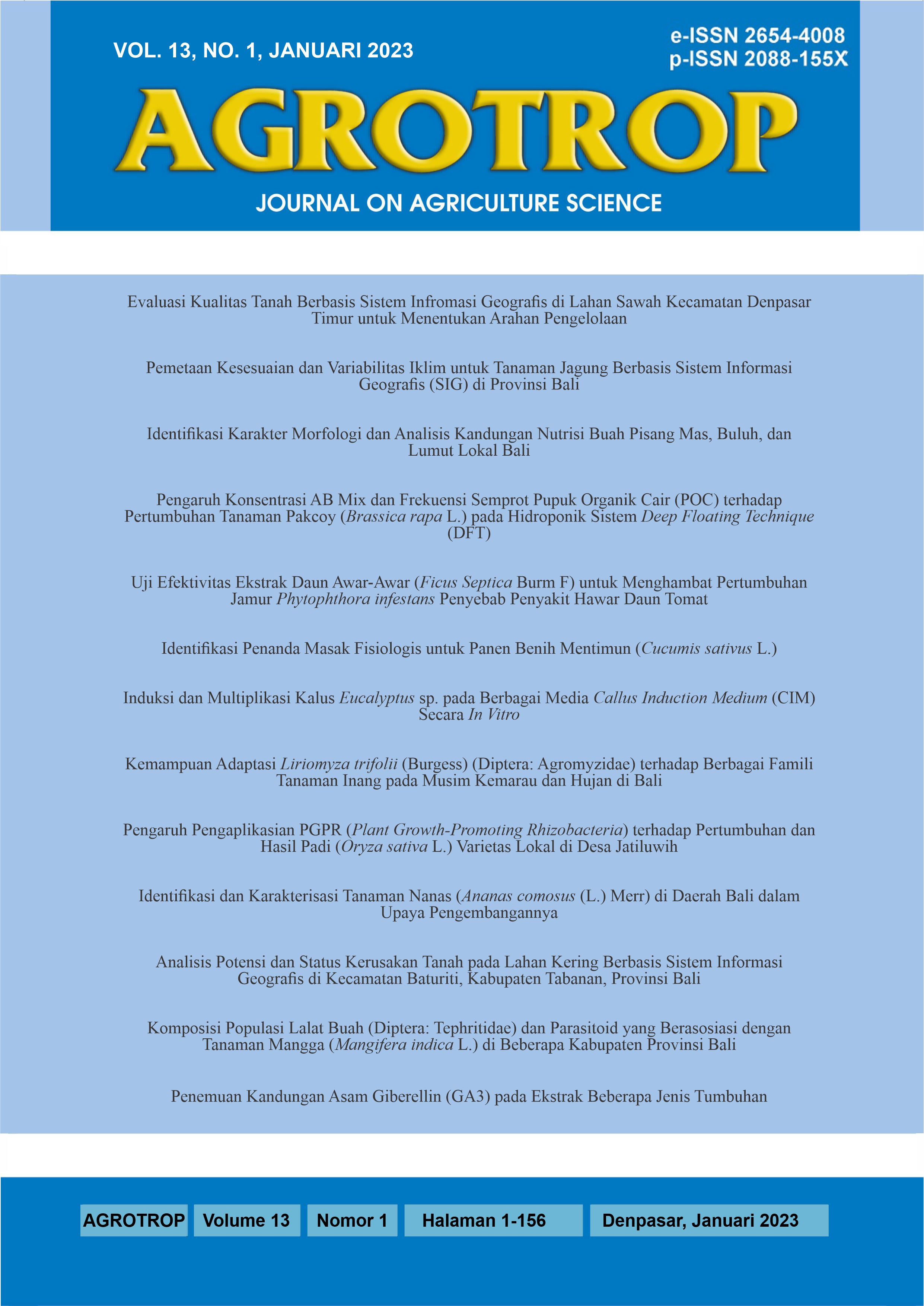Identifikasi dan Karakterisasi Tanaman Nanas (Ananas comosus (L.) Merr) di Daerah Bali dalam Upaya Pengembangannya
Abstract
Identification of Pineapple Plants (Ananas comosus (L.) Merr) in Bali in its Development Efforts. This study aimed to determine the existence of pineapple plants and what plant alerts are planted in Bali for its development. The first stage in this research is to collected information about the existence of pineapple plants through interviews with the Bali Provincial Agriculture Office and also with local farmers. The next stage is who is build through interviews with farmers and the original varieties found through reference studies from several journals and books. The test process is carried out by looking at the quantitative and qualitative variables, then the resulting data are displayed in the table along with the images presented descriptively. The results showed that pineapple was the highest producer in three districts in Bali. The pineapple plants cultivated in Badung Regency are Nanas Subang, Tabanan Manas Pucung Regency, while in Karangasem Regency Bali Local Pineapples are found planted without maintenance. Based on the characterization results of pineapple plants in Badung and Tabanan Districts, the Cayenne variety is categorized as large fruit, sweet and sour taste, contains lots of water and is not spiny. Meanwhile, pineapple in Karangasem Regency is categorized as the Red Spanish variety with the characteristics of small fruit, sour taste tends to itch, contains little water and spines. Pineapple plants found in the Bali Region need to be cultivated intensively such as seeding, planting, maintaining and harvesting in order to obtain better yields.
Downloads
References
Departemen Pertanian, (2013). Peraturan Menteri Pertanian No 82/Permentan/OT.140/8/2013. Kementerian Pertanian.
Erlita, Y. 2017 Pengolahan Limbah Kulit Nanas Sebagai Pakan Alternatif Pada Ternak Rumansia. Portal Resmi Provinsi Sumater Barat.
Hadiati, S., dan N. L. P. Indriyani. 2008. Budidaya Nenas. Balai Penelitian Tanaman Buah Tropika. Sumatera Barat.
Matthew D.K and N. R. Bumgarner. 2012. Using oBrix as an Indicator of Vegetable Quality. Ohio: The Ohio State University
Santoso, H.B. 2010. Budi Daya Tanaman Nenas. PT Penebar Swadaya. Jakarta.
Syah, M. A. I., E. Anom, S. I. Putra. 2015. Pengaruh pemberian beberapa dosis pupuk NPK tablet terhadap pertumbuhan dan produksi tanaman nanas (Ananas comosus (L.) Merr) di lahan gambut. Jurusan Agroteknologi, Fakultas Pertanian, Universitas Riau. Jurnal Online Mahasiswa Faperta 2
Wicaksono, 2015. Produksi Tanaman Nanas (Ananas Comosus (L.) Merr.). Fakultas Pertanian.











